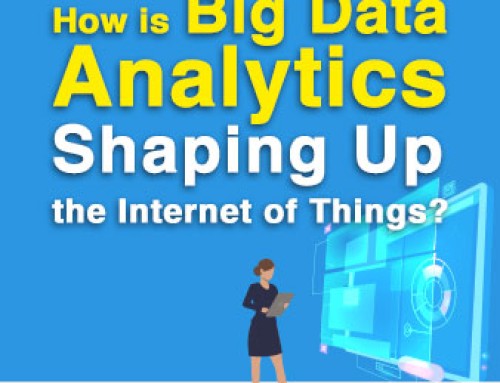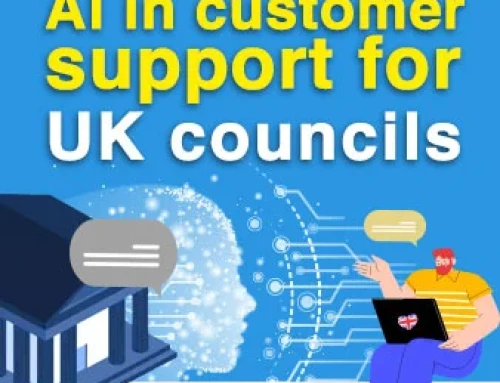5 steps to integrate AI into your workforce management strategy
Unleash AI’s potential: Revolutionise your workforce management
It’s fascinating to witness how artificial intelligence (AI) has transitioned from being an experimental venture to an indispensable business tool. As of 2023, 92% of surveyed organisations report measurable benefits as a direct result of AI integration. For organisations that are yet to embrace this technological revolution, this article provides a comprehensive five-step process to effectively integrate AI into your workforce management strategy, thereby achieving elevated operational efficacy and strategic advantage.
Benefits of leveraging AI into your workforce management
The advent of artificial intelligence brings about a paradigm shift in managing workforce operations. AI possesses the power to revolutionise traditional practices, thereby contributing to a streamlined, efficient, and more objective managerial approach.
Here are just some of the benefits adopting AI in workforce management may bring to your organisation:
Improved resource allocation
AI tools can effectively analyse the skills, strengths, and weaknesses of each team member, thereby enabling managers to distribute tasks more efficiently. This ensures optimal utilisation of resources and fosters productivity.
Additionally, AI-powered project management software can track employee allocation, making sure your team’s workload is divided fairly.
Advanced predictive analysis
Through machine learning, AI can predict workforce trends, identify potential challenges, and suggest preemptive solutions, aiding in proactive decision-making.
Enhanced productivity
AI reduces manual and mundane tasks, freeing up employees to engage in more complex, creative, and strategic roles. This not only increases productivity but also enriches job satisfaction.
According to recent surveys, 81% of employees confirm that integrating artificial intelligence indeed improves their performance at work.
Reduced employee turnover
By identifying patterns and reasons behind employee attrition, AI can help in formulating effective retention strategies, thereby reducing turnover rates.
Fair performance evaluations
AI eliminates the risk of human bias in performance assessments, ensuring that evaluations are fair, consistent, and objective.
Automated payroll processing
Automation of payroll processing through AI reduces errors, saves time, and streamlines the entire process, ensuring timely and accurate compensation for the workforce.
Through AI integration, the path to elevated efficiency, fairness, and strategic foresight in workforce management is within reach for organisations ready to embrace this technological transformation.
5 steps to integrate AI into your workforce management strategy
With the undeniable impact of AI on organisations’ productivity and efficiency, it is imperative to build a solid plan for integrating AI into your workforce management strategy. It is not an overnight process, but a journey involving a series of well-calculated steps.
Some of the AI tools are relatively easy to integrate while others take some time to figure out the best way to make it work for your team.
The following five-step approach provides a framework for successful AI integration into your organisation, ultimately paving the way for optimised operations.
1. Identify your needs
The process of integrating AI into your workforce management strategy begins with a rigorous examination of your current state of affairs. Understanding the nuances of your existing operations and identifying potential areas of improvement is crucial. This could involve scrutinising practices like time tracking, workforce scheduling, or even client interactions in the realm of customer service.
The objective is to pinpoint pain points or inefficiencies that could benefit from the infusion of AI. Are manual processes hampering productivity? Are there bottlenecks in customer service due to human limitations? Are scheduling conflicts frequently disrupting workflows?
Such questions help identify your organisational needs and shape the direction of your AI integration strategy.
2. Research suitable AI solutions
Once the operational needs have been identified, the next step is to explore the various AI tools and technologies that could address those needs. This research phase is critical to ensuring that the AI tools you choose are not just innovative, but also relevant and effective for your business.
Consider tools designed for business operations that offer functionalities aligned with your specific requirements. This could be AI-powered time tracking software, intelligent scheduling applications, or customer service chatbots. It is essential to weigh the features, scalability, and cost-effectiveness of these tools. Informed decisions at this stage lay the foundation for a successful AI integration.
3. Prepare the workforce for AI
AI integration is more than just a technical shift; it involves a significant cultural transformation within the organisation. It’s critical to help your workforce understand and embrace this change. Investing in proper training, like seminars, workshops, or individual coaching, can equip your employees with the skills to effectively use AI tools.
Digital transformation never comes without some challenges. Overcoming employees’ resistance to change, a common hurdle, involves clear communication about the benefits of AI and how it can ease work, not replace it.
Moreover, it’s important to analyse employee performance data and identify skill gaps. By reskilling and upskilling employees, you not only prepare them for AI adoption but also add to their professional growth.
4. Implement AI in your workforce strategy
With the groundwork laid, it’s now time to integrate the selected AI solution into your workforce strategy. This phase should commence with a pilot test to understand the tool’s operation in a real-world scenario. Such a trial run provides valuable insights into the tool’s effectiveness and its alignment with your identified needs.
The implementation phase is an opportunity to see your planning in action. Yet, it’s also a time to stay flexible and responsive to any unexpected challenges. Should issues arise, they can be addressed promptly to optimise the system before the full-scale rollout. This proactive approach helps prevent major roadblocks in the broader implementation.
5. Monitor and adjust
The integration of AI into your workforce management strategy doesn’t end with the tool’s implementation. It’s an ongoing process that requires continuous monitoring and adjusting. Post-implementation, closely observe the tool’s impact on workforce management.
Are the identified needs being addressed effectively? Is there an improvement in efficiency and productivity? Regular monitoring helps answer these questions and reveals if the AI solution is performing as expected.
If gaps exist, it might be necessary to adjust your strategy. This could involve tweaking the AI tool’s parameters, addressing user-related issues, or in some cases, exploring alternative solutions or reconsidering the particular integration.
Ultimately, this iterative process of monitoring and adjustment ensures the continual growth and effectiveness of your AI integration.
Future-proof your workforce
Given the flux of the business environment, integrating AI into your workforce management strategy is a smart step towards staying future-ready.
However, to fully future-proof your workforce, it is necessary to go beyond just implementation. It involves continually evolving your strategies and practices to maximise the benefits of AI and mitigate any associated risks.
With AI forming a key part of your workforce strategy, there are certain things to keep in mind:
● Keep an eye on AI trends
AI technology continues to evolve rapidly. It is essential to stay updated with the latest AI trends and advancements, as they can offer newer avenues to enhance your workforce administration.
This includes everything from AI presentation software that can transform your corporate meetings, to AI-powered solutions that redefine mobile commerce, bringing innovation and efficiency to the forefront. Staying in tune with these developments will help you leverage AI in more innovative and effective ways.
● Prioritise hiring AI-skilled professionals
As AI becomes more intertwined with business operations, having AI-skilled professionals in your team becomes increasingly important.
Surveys show that even the companies undergoing major layoffs are prioritising hiring more AI-educated workforce in 2023 and beyond. The most in-demand AI roles include AI engineers, research scientists, and AI solutions architects.
These professionals can help navigate the AI landscape more effectively and harness the technology’s potential to the fullest. Prioritising such skills in your hiring strategy not only strengthens your AI capabilities but also prepares your workforce for the future.
● Avoid over-reliance on AI
Despite its numerous benefits, over-reliance on AI can create potential risks, including the loss of human oversight and vulnerability to technical glitches or cybersecurity threats.
It’s important to maintain a balance between AI-powered automation and human involvement. This ensures that your business benefits from AI’s efficiency and speed, while human judgment and intervention safeguard against unforeseen challenges.
Final thoughts
The potential of artificial intelligence to enhance workforce management is undeniable. From smart time tracking to automated scheduling, and from predictive analysis to performance evaluations, AI paves the way for efficiency, productivity, and fairness.
But realising this potential calls for a strategic and measured approach – identifying the right needs, choosing the appropriate AI tools, training the workforce, implementing, and continually adjusting.
As the landscape of AI evolves, the organisation of the future is one that leverages AI, yet remains human-centric at its core.





